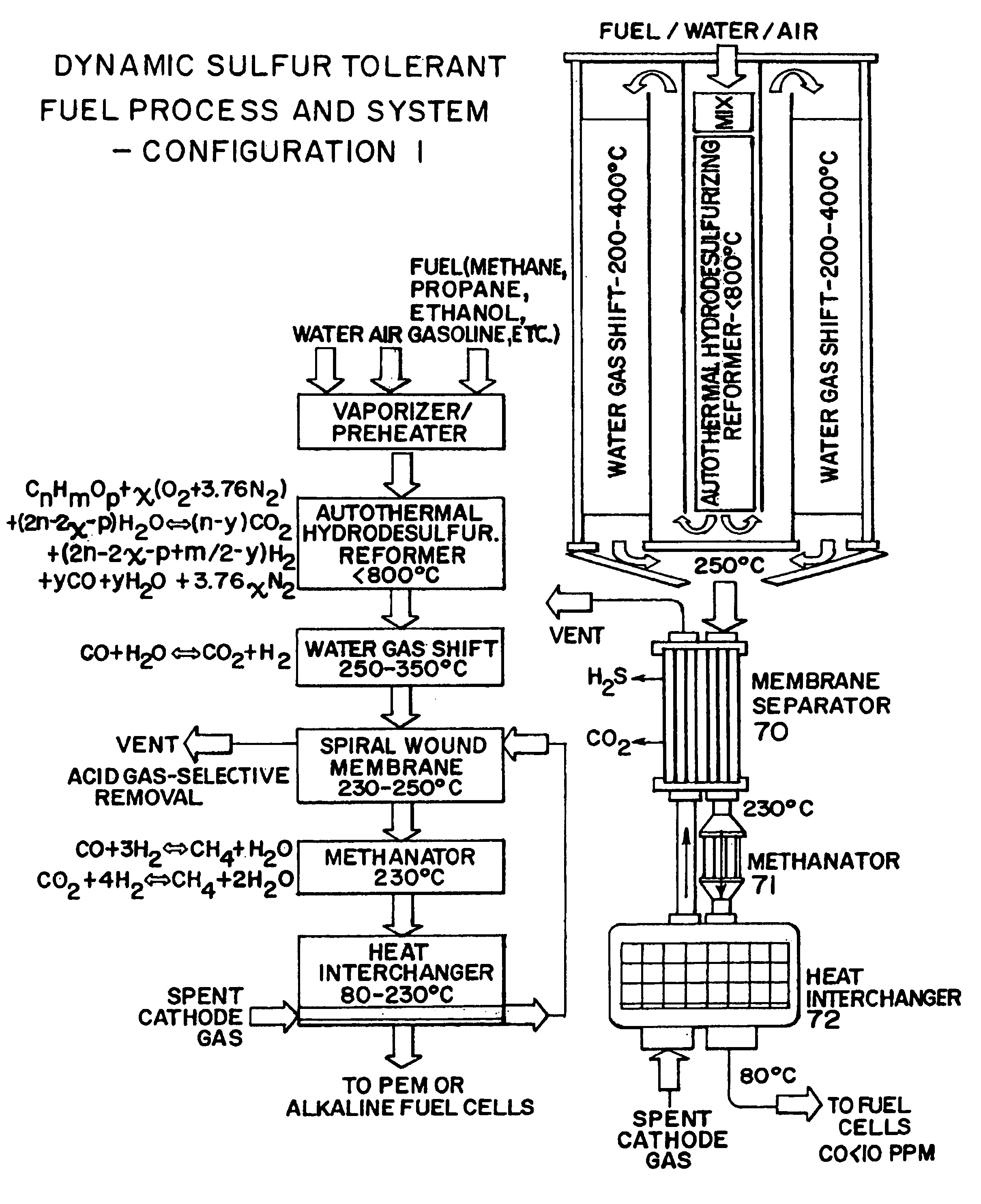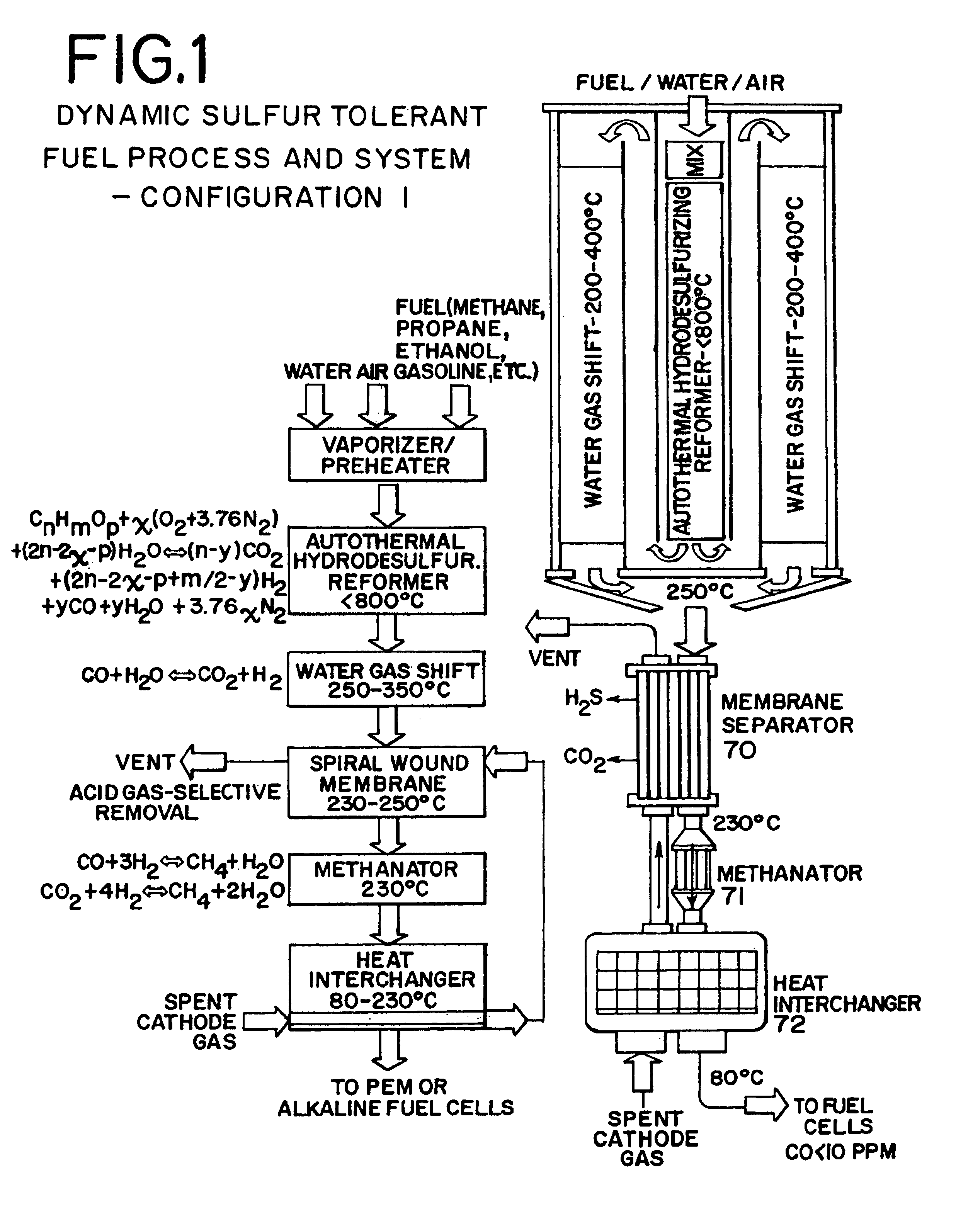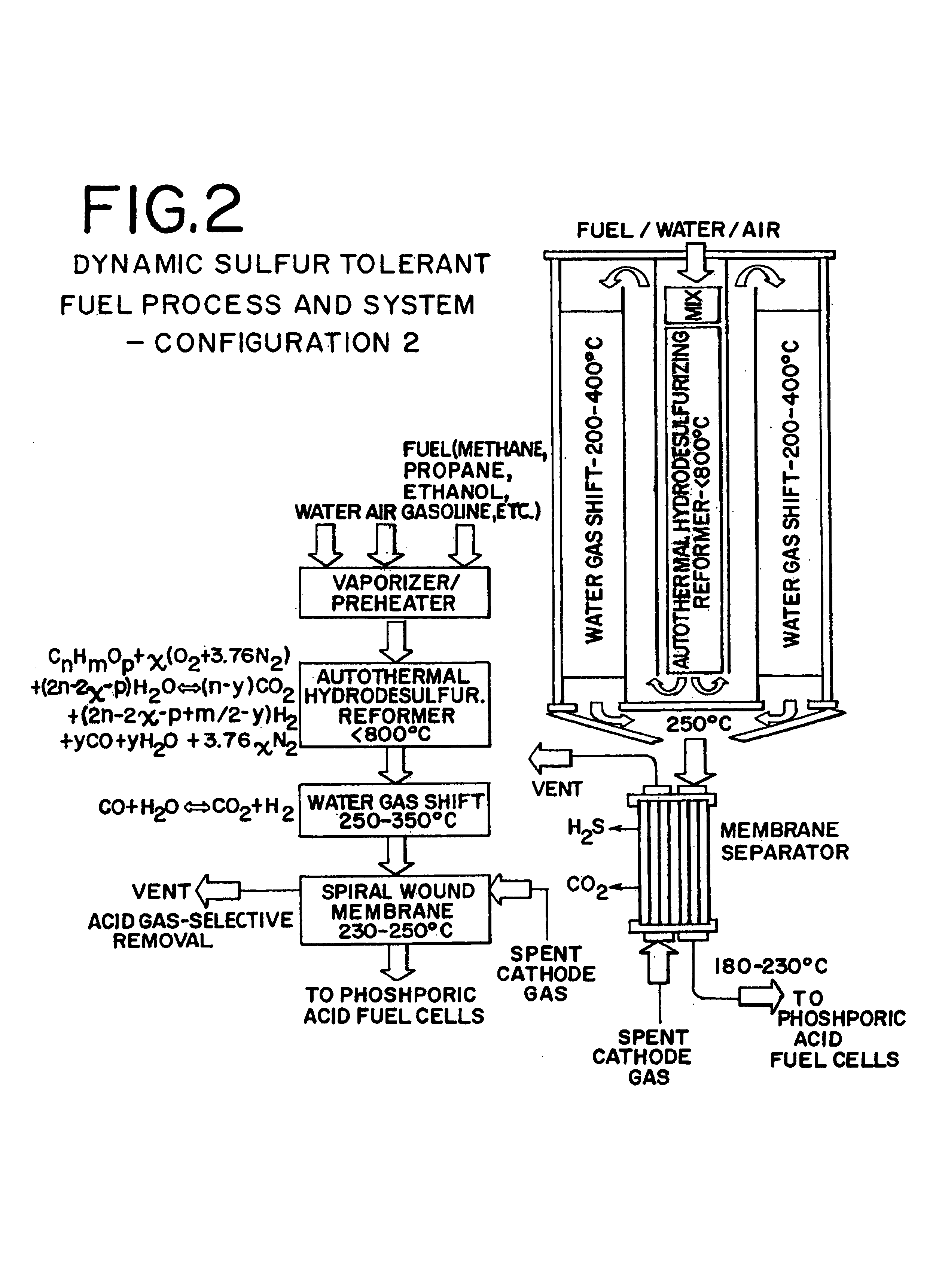Dynamic sulfur tolerant process and system with inline acid gas-selective removal for generating hydrogen for fuel cells
- Summary
- Abstract
- Description
- Claims
- Application Information
AI Technical Summary
Benefits of technology
Problems solved by technology
Method used
Image
Examples
example 1
[0061]A dynamic sulfur tolerant fuel process and system having 9″ diameter and 16″ long (ASMS is not included in the dimensions) was loaded with approximate 0.5 kg of AHR catalyst (FIG. 6). The temperature in the catalyst bed was kept at about 700 to 750° C., and the pressure was kept at about 2 psig. The flow rates for the feeds were: 1.3870 gmol per minute natural gas, 3.8308 gmol per minute air, and 1.9418 gmol per minute water. Table 1 presents the AHR products, which were cooled to about 350° C. before they were directed to the single stage WGS reactor packed with our improved sulfur tolerant non-pyrophoric WGS catalyst. The gas temperature was further declined to about 250° C. across the WGS reactor. Table 2 presents the WGS products where the concentration of CO was reduced to about 0.8 mol % (dry):
[0062]The acid gas (H2S and CO2) selective removal was carried out in an ASMS. Table 3 presents the ASMS products at about 180 to 230° C. which were then fed to the PA fuel cells f...
example 2
[0066]Same as Example 1 except a methanator was added after the ASMS for the final CO and CO2 contaminant reduction to appropriate levels (essentially total elimination). Table 4 presents the methanator products which were then cooled by the interchanger to about 80° C. before they were fed to the PEM or alkaline fuel cells for generating about 5.6 kWe power (FIG. 5).
[0067]
TABLE 4METHANATOR PRODUCTSASMSVol %,Vol %,LHVProductsgmol / minwetdryBtu / hrkWtkWe*H2S3.43 × 10−745 ppb52 ppbH23.498446.2853.1248,08514.085.63CO———CO2———N22.989139.5445.38CH40.09861.311.50H2O0.973112.87—TOTAL7.5592100.00100.00Efficiency**METHANATOR = 76.27% *80% fuel utilization plus 50% fuel cell stack efficiency are used in the calculations for fuel cell electric power generation **The energy efficiency (%) is defined as LHV of H2 produced / LHV of fuel input × 100
example 3
[0068]Same as Example 2 except that an AWMR was used to replace both the ASMS and methanator for the final CO contaminant reduction to less than 10 ppm levels required by the PEM fuel cells. Table 5 presents the AWMR products which were then cooled by the interchanger to about 80° C. before they were fed to the PEM fuel cells for generating about 5.8 kWe power. Since trace amounts of CO2 (256 ppm wet) still remains in the hydrogen rich gas produced by using the AWMR, a CO2 removal step is needed before it can be fed to alkaline fuel cells.
[0069]
TABLE 5AWMR PRODUCTSASMSPro-Vol %,Vol %,LHVductsgmol / minwetdryBtu / hrkWtkWe*H2S3.43 × 10−7 46 ppb 52 ppbH23.595447.7254.4749,41814.475.79CO5.6745 × 10−5 7.5 ppm 8.6 ppmCO21.9267 × 10−3256 ppm292 ppmN22.989139.6845.29CH40.01370.180.21H2O0.933512.39—TOTAL7.5336100.00100.00Efficiency**AWMR = 78.32% *80% fuel utilization plus 50% fuel cell stack efficiency are used in the calculations for fuel cell electric power generation **The energy efficiency...
PUM
| Property | Measurement | Unit |
|---|---|---|
| Temperature | aaaaa | aaaaa |
| Temperature | aaaaa | aaaaa |
| Temperature | aaaaa | aaaaa |
Abstract
Description
Claims
Application Information
 Login to View More
Login to View More - R&D
- Intellectual Property
- Life Sciences
- Materials
- Tech Scout
- Unparalleled Data Quality
- Higher Quality Content
- 60% Fewer Hallucinations
Browse by: Latest US Patents, China's latest patents, Technical Efficacy Thesaurus, Application Domain, Technology Topic, Popular Technical Reports.
© 2025 PatSnap. All rights reserved.Legal|Privacy policy|Modern Slavery Act Transparency Statement|Sitemap|About US| Contact US: help@patsnap.com



